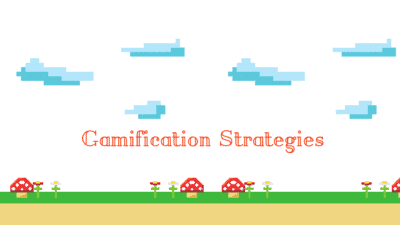The White Whale: Sales and Marketing Alignment

Everyone is well aware of the struggle that exists between marketing and sales departments. You might be a sales manager who struggles to get what you need from marketing. Maybe you’re a marketer who feels the materials you provide the sales team never get used. Despite working in the same office, these two departments can feel like two, totally separate worlds. But it’s important to remember that though the work differs, sales and marketing have the same objective: generating qualified leads for your business and converting them into a closed-won deal.
That’s why sales and marketing alignment is a must if you want your company to grow.
Benefits
The benefits of sales and marketing working together might seem obvious, but it’s important to remind ourselves why the extra effort is worth it.
So what do you get out of sales and marketing alignment?
- A better understanding of your buyer cycle – Too often, sales and marketing have completely different ideas about the buyer’s journey. When these teams work with one another, they generate a better understanding of their customers. When you know what your customers need and want, you can shorten your sales cycle.
- Increased close rate – Director of Marketing at Ambition, Jeremy Boudinet, noted that at his company, sales leads with no help from marketing had a close rate of 1.5%. But leads that came from online marketing materials had a close rate of 25%. Sales is still closing, but you need a balanced approach to be successful. By having valuable content that can educate your customers before they even get to you, you’ll see that close rate get higher.
- Holistic business goals as opposed to team goals – While it’s important for each team to have its own objectives, it’s equally important for the company to have a holistic set of goals. Once sales and marketing begin working together as one, overarching company goals will inevitably emerge. These goals might be created during brainstorming sessions or joint sales and marketing campaigns. This level of cohesion means your company isn’t fragmented–you’re one unit.
So how do we achieve this?
1. Constant Communication
Why is communication so important? It’s the biggest fundamental when it comes to having a successful business. Without communication, things don’t get done. In sales and marketing alignment, the necessity comes from understanding one another. Without constant communication, sales and marketing will separately assume they know what their goals should be without really being on the same page. You should never create a strategy on an assumption.
So talk to one another. Is there an incentive for a specific product in sales this month? If marketing knows this, they can build out email and social campaigns to support cold-calling efforts. Does marketing want to make a push on a certain social platform this quarter? If the sales team doesn’t know this, they won’t be able to share those social posts.
Most importantly, sales and marketing need to communicate their insights for a better understanding of the customer, as we discussed earlier. Without this, each team is only working with half the picture.
Creating a calendar that lists group initiatives is a great way to stay organized and increase visibility. It’s also an easy way to maintain communication without a lot of effort. Both groups can post to the calendar and have it shared out among all team members.
Another way teams can increase good communication is implementing a tool specifically for communication. You can choose from plenty of the free tools available. Choose one that allows you to create a channel for sales and marketing so simple questions are easily answered. You’ll also find yourself sending one on one messages as opposed to drafting long emails or picking up the phone. This type of conversation is more casual, which can often mean less tense.
The most important conversation you have to have is a three-way conversation between sales, marketing, and your customers. When marketers understand what language sales is using to close deals, they can use that in their content. At the same time, when sales understands what content is working for their customers, they can do a better job of appealing to those needs.
The sales funnel is not a direct route. We might like to think so, but every customer is different. Sometimes they jump from awareness to transaction in what seems like seconds, and others remain in the decision phase for an impossible amount of time. Both marketers and sales representatives need to understand the different stages a customer can reach and act accordingly. This can only be accomplished by setting up a standard for good communication.
2. Aligning Goals Monetarily
Creating monetary goals for all team members, including marketing, holds them accountable. Establish what your leads are worth to you so you have a clear ROI for both the marketing and sales teams. And make sure those numbers match. This will help marketing understand its role in terms of revenue contribution. Applying a price tag to those leads means your marketing team is now working under the similar constraints that your sales team is.
You can also align both teams’ bonus goals with lead generation and conversion. This incentivizes your marketing team, leading to a better sales and marketing relationship. You’ll find marketing begins to work for sales a little bit harder. And you’ll see sales caring more about the leads that marketing provides.
Pretty soon, marketing and sales will be speaking the same language.
3. Use the Same Tools
One of the biggest barriers that can exist between sales and marketing can be the tools each team uses. If you’re working in different applications and need to share information, that means you’re doing a lot of exporting. This type of work process is often frustrating and tedious, and sometimes it’s easier to just not share a document with the other team.
An unfortunate reality of the breakdown in communication between sales and marketing is the amount of effort needed to communicate. Using the same tools, you minimize the effort required by both parties to share and understand information.
Using the same CRM is the easiest way to ensure both parties are looking at the same information. There are a lot of great CRMs out there that are built with both sales and marketing in mind. DemandZEN even has a few CRM recommendations for you.
4. Get Social
Sales teams might be resistant to it, but getting your team on LinkedIn creates another level of networking for your business. After the initial setup, marketing can do a lot of the heavy lifting for the sales team. Encouraging this type of interaction makes that three-way conversation easier to have as time goes on. Sales and marketing are both engaged with the customer, each in a way that makes sense for them.
Remaining Aligned
This is the hardest part. Getting into alignment is work in itself, but staying aligned through the years requires a lot of effort. You’ll need to have follow-up conversations, reevaluate your customers (together), discuss events, and brainstorm–and you need to do it regularly.
One of the challenges of sales and marketing alignment can be how much time it requires to stay aligned. That’s why you need to stay organized. Make weekly or monthly meetings with well-defined agendas. Don’t schedule meetings without an idea of what needs discussion. You’ll find yourself surrounded by a group of people who won’t talk. To get the most out of your sales and marketing teams, you need to form structure.
Conclusion
Sales and marketing alignment can sometimes seem like the white whale of the business world. While it can be a challenge to keep these groups working together, the benefits far outweigh the hardship. Keep communication open. Encourage creative thinking. Listen to the ideas. When you do these things, you will find your company, as a whole, in a better place.
DemandZEN wants to help you with your sales and marketing strategy. Drop us a line and tell us what you need help with.
You Might Also Enjoy These Posts
Demand Generation vs Lead Generation
Gamification Strategies: Badges in B2B Marketing
Welcome To DemandZEN
DemandZEN specializes in Account-Based Demand Generation and solving the challenges around finding, engaging and converting target accounts into real opportunities for B2B Technology and Services companies.



